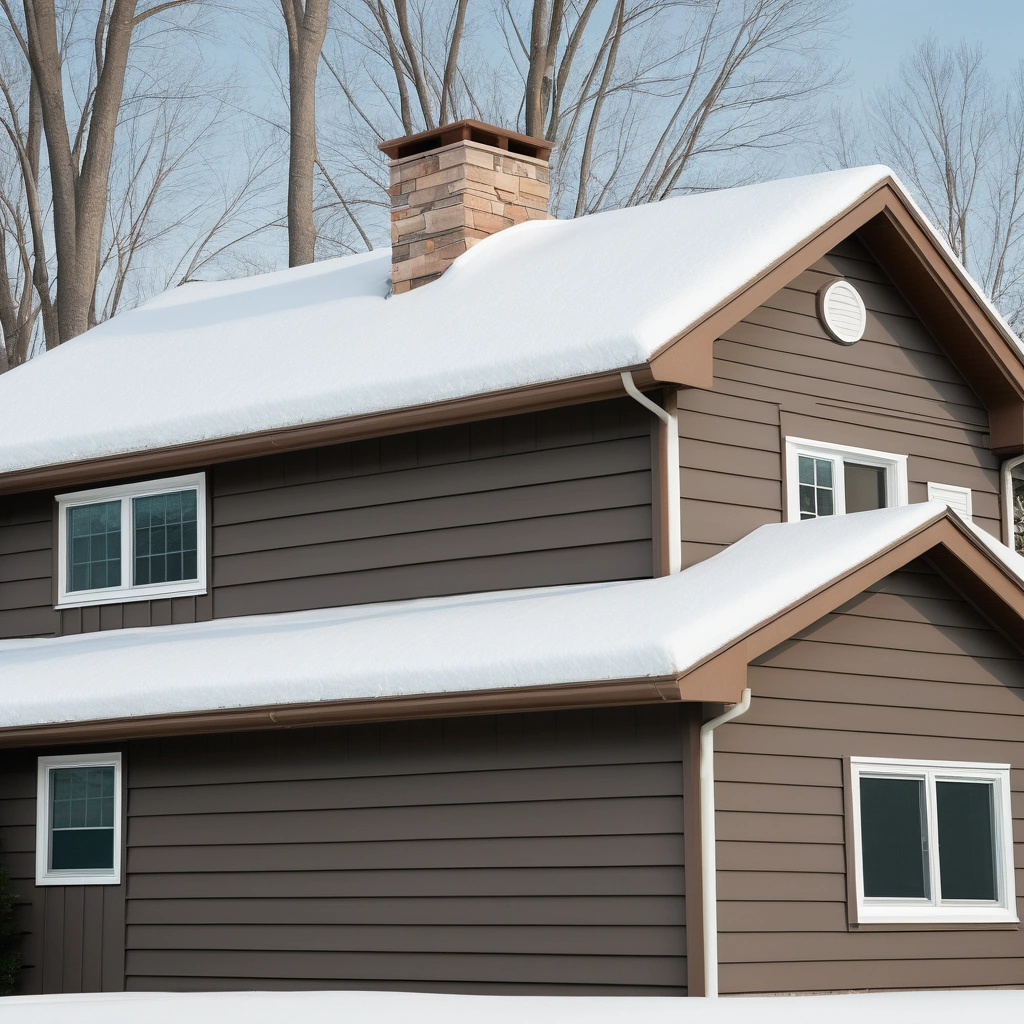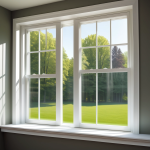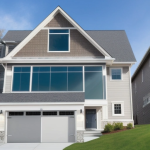Top Siding Choices for Homeowners in Cold Weather Areas: Materials That Keep Heat In
Battling the Chill: The Importance of Siding in Cold Climates
As winter’s icy grip tightens, homeowners in colder regions face the annual challenge of maintaining comfortable and energy-efficient homes. While furnaces and insulation play vital roles, the unsung hero of winter warmth is often the siding. Selecting the right siding material can significantly impact a home’s ability to retain heat, resist moisture, and withstand the elements. This article delves into the top siding choices for homeowners in cold weather areas, focusing on materials that excel at keeping the heat in and the cold out, ultimately reducing energy bills and enhancing comfort.
In the realm of exterior home improvement, the choice of siding transcends mere aesthetics; it’s a critical decision impacting energy efficiency and long-term structural integrity. For those residing in regions prone to harsh winters, selecting the right cold weather siding is paramount. The primary goal is to minimize heat loss, a phenomenon directly linked to increased energy consumption and escalating heating bills. Effective siding acts as a thermal barrier, preventing precious warmth from escaping through the walls.
Consider, for instance, that a poorly insulated home can lose up to 25% of its heat through the walls alone, a figure that underscores the importance of investing in energy-efficient siding solutions. Beyond insulation, weather resistance is another crucial factor to consider when selecting siding for cold climates. Siding must withstand freezing temperatures, heavy snow loads, and the constant freeze-thaw cycles that can wreak havoc on building materials. Moisture penetration can lead to significant problems, including mold growth, wood rot, and structural damage.
Therefore, homeowners should prioritize materials known for their durability and resistance to water absorption. Fiber cement siding, such as James Hardie siding, exemplifies this quality, offering exceptional protection against moisture and the elements. Similarly, certain types of metal siding, like steel siding, provide unmatched strength and resistance to impact from snow and ice. The R-value of siding is a key metric for evaluating its thermal performance. R-value measures a material’s resistance to heat flow; the higher the R-value, the better the insulation.
While some siding materials, like insulated vinyl siding, come with a built-in insulation layer, others, such as traditional fiber cement or metal siding, may require the addition of external insulation to achieve optimal energy efficiency. Understanding the R-value of different siding options and how they contribute to overall home insulation is essential for making an informed decision. Consulting with a siding installation professional can provide valuable insights into the best insulation strategies for specific climates and home designs, ensuring maximum energy savings and long-term comfort.
Vinyl Siding: An Affordable Option with Insulating Power
Vinyl siding’s enduring popularity stems from its budget-friendly price point and minimal upkeep requirements, making it an attractive option for homeowners nationwide. However, when selecting cold weather siding, it’s crucial to recognize that standard vinyl’s performance can be compromised in frigid temperatures. Insulated vinyl siding represents a significant upgrade, engineered with a foam backing that dramatically enhances thermal performance. This integrated insulation acts as a barrier against heat loss, effectively keeping homes warmer during the winter months and potentially lowering energy bills.
The key is to look for products specifically designed for colder climates and to understand the R-value, a critical metric for assessing thermal resistance. Choosing the right insulated vinyl siding involves careful consideration of its R-value, which indicates its ability to resist heat flow. A higher R-value signifies greater insulation and, consequently, better energy efficiency. For instance, CertainTeed’s Cedar Impressions line not only replicates the aesthetic appeal of natural cedar but also boasts impressive R-values thanks to its innovative insulation technology.
This dual benefit—enhanced curb appeal and superior thermal performance—makes it a compelling choice for homeowners in cold weather regions. Furthermore, proper siding installation is paramount to maximizing the benefits of insulated vinyl. Gaps or improper sealing can negate the insulating properties, leading to heat loss and increased energy consumption. Therefore, it is crucial to work with experienced siding installation professionals who understand the nuances of installing insulated vinyl siding in cold climates. Beyond R-value, the composition and manufacturing process of insulated vinyl siding play a crucial role in its cold-weather performance.
Look for siding that is specifically formulated to resist cracking, warping, and fading in extreme temperatures. Some manufacturers incorporate impact modifiers and UV inhibitors to enhance durability and longevity. Furthermore, the attachment method is important. Many insulated vinyl siding products feature a ‘locking’ system that helps to create a tight, weather-resistant seal, further minimizing heat loss and preventing moisture infiltration. Investing in high-quality insulated vinyl siding that is properly installed offers a cost-effective way to improve energy efficiency and enhance the comfort of your home throughout the winter months.
Fiber Cement Siding: Durable and Weather-Resistant
Fiber cement siding, particularly James Hardie siding, has garnered significant popularity among homeowners prioritizing both long-term durability and aesthetic appeal. While fiber cement itself offers minimal inherent insulation, its compatibility with external insulation systems makes it a viable contender for energy-efficient homes even in frigid climates. The key lies in understanding that fiber cement acts primarily as a protective shield against the elements, boasting exceptional resistance to moisture, fire, and pests – all critical considerations in areas prone to harsh winters.
Moreover, fiber cement’s dimensional stability, meaning it doesn’t expand and contract as dramatically as materials like vinyl or wood, minimizes the risk of unsightly warping, cracking, or joint separation when temperatures plummet below freezing. This stability translates to lower maintenance costs and a longer lifespan, adding to its appeal as a cold weather siding solution. James Hardie siding further elevates the appeal of fiber cement through its Climate Zone system. Recognizing that different regions face distinct weather challenges, James Hardie engineers its siding products to withstand specific environmental stressors.
For example, HardiePlank siding designed for colder climates incorporates a proprietary formulation that enhances its freeze-thaw resistance, preventing damage from repeated cycles of freezing and thawing. This climate-specific engineering ensures optimal performance and longevity, providing homeowners with peace of mind knowing their siding is built to endure the rigors of winter. When exploring fiber cement options, it’s crucial to consult with a qualified siding installation professional familiar with James Hardie products and best practices for cold-weather installation.
To maximize energy efficiency with fiber cement, consider pairing it with a continuous layer of rigid foam insulation installed beneath the siding. This creates a thermal barrier that minimizes heat loss through the walls, significantly improving the home’s R-value and reducing energy consumption. For example, adding a layer of 1-inch thick rigid foam board can increase the wall’s R-value by 4 to 6, depending on the type of foam used. This approach not only enhances energy efficiency but also helps to maintain a more consistent indoor temperature, improving overall comfort during the winter months. Combining the durability of fiber cement with the insulating power of rigid foam creates a robust and energy-efficient siding system ideal for cold climates, making it a smart winter home improvement investment.
Metal Siding: Strength and Durability with Proper Insulation
While less common, metal siding, particularly steel and aluminum, offers exceptional durability and resistance to the elements, making it a contender for cold weather siding solutions. Steel siding is incredibly strong, capable of withstanding heavy snow loads and strong winds that are common in northern climates. Homeowners in regions prone to blizzards often choose steel for its resilience against physical damage. However, metal is a good conductor of heat, so it’s crucial to incorporate a proper insulation layer to prevent heat loss.
Without adequate home insulation, steel siding can actually contribute to higher energy bills during the winter months, as heat escapes more readily. Insulated metal siding options are available, combining the strength of metal with the thermal benefits of foam insulation, effectively boosting the R-value of the wall assembly. Aluminum siding is lighter than steel and resists corrosion, making it a particularly good choice for coastal areas with cold, salty air where other materials might degrade more quickly.
Its resistance to rust is a significant advantage in such environments. Like steel, however, aluminum requires insulation for optimal energy efficiency. A common approach involves installing a continuous layer of rigid foam insulation beneath the aluminum siding during siding installation. This creates a thermal break, minimizing heat transfer and improving the overall energy performance of the home. Choosing the right type and thickness of insulation is crucial for maximizing the benefits of metal siding in cold climates.
Beyond the material itself, proper installation plays a critical role in the energy efficiency of metal siding. Gaps or poorly sealed seams can negate the benefits of even the best insulated metal siding. Expert siding installation is essential to ensure a tight, weather-resistant barrier against the elements. Furthermore, consider the color of the metal siding. Darker colors absorb more solar radiation, which can be beneficial in some cold climates, helping to passively heat the home during sunny winter days. However, this effect is less pronounced than with other siding materials, and the primary focus should remain on adequate insulation to achieve optimal energy-efficient siding performance. Ultimately, metal siding presents a durable, albeit thermally challenging, option that requires careful planning and execution to be effective in cold weather.
Making the Right Choice: A Lasting Investment in Home Comfort
Choosing the right siding for your home in a cold weather area represents a significant investment, one that directly impacts comfort, energy efficiency, and long-term durability. While vinyl, fiber cement, and metal siding each present distinct advantages, the cornerstone of effective cold-weather performance lies in prioritizing insulation and robust weather resistance. For instance, selecting insulated vinyl siding with a high R-value can dramatically reduce heat loss compared to standard vinyl. Similarly, while James Hardie siding offers exceptional resilience, pairing it with an appropriate insulation layer transforms it into a formidable barrier against winter’s chill.
Ultimately, the best siding for cold climates isn’t solely about the material itself, but rather the complete system, including insulation and installation quality. Beyond the material choice, understanding the nuances of climate-specific engineering is crucial. Siding designed for colder regions often incorporates features that mitigate the effects of freeze-thaw cycles, preventing cracking and warping. Proper siding installation is equally vital; even the most energy-efficient siding will underperform if installed incorrectly, leading to drafts and moisture infiltration.
Consider, for example, the importance of properly sealed seams and flashing around windows and doors. These details, often overlooked, play a critical role in preventing heat loss and maintaining a comfortable indoor environment. Investing in professional siding installation ensures these crucial elements are addressed, maximizing the benefits of your chosen siding material. Furthermore, homeowners should carefully evaluate the long-term costs associated with different siding options. While some materials, like metal siding (steel siding or aluminum siding), may have a higher initial price point, their exceptional durability can translate to lower maintenance and replacement costs over time.
Conversely, while vinyl siding offers an affordable upfront investment, its lifespan and resistance to extreme weather conditions may be less than that of fiber cement or metal. By carefully considering the R-value, climate-specific engineering, and proper installation techniques, homeowners can create a warm, energy-efficient, and resilient home that stands up to the challenges of winter for years to come. Consulting with a qualified siding contractor specializing in winter home improvement is essential to determine the best material and installation method for your specific needs and budget, ensuring a lasting and valuable investment.


